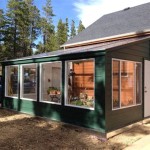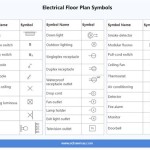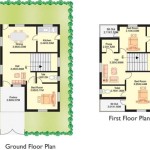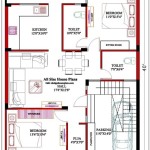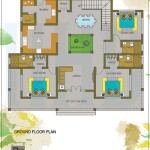Home Plans Without Garages: Exploring Design Options and Benefits
The architectural landscape has witnessed a shift in housing preferences, with a growing segment of homeowners opting for home plans that deliberately exclude attached garages. This trend, driven by various factors ranging from aesthetic considerations to lifestyle choices, necessitates a deeper understanding of the design implications, benefits, and potential challenges associated with homes devoid of integrated garage spaces. This article delves into the nuances of home plans without garages, providing an expository overview of the key considerations for prospective homeowners and builders.
Traditionally, the attached garage has been a standard feature in many residential designs, offering convenience, storage, and protection from the elements. However, the increasing popularity of alternative housing strategies suggests a re-evaluation of this norm. Homeowners are increasingly prioritizing other features, such as larger living spaces, enhanced landscaping, and walkable neighborhoods, which may necessitate sacrificing the convenience of an attached garage.
The exclusion of a garage can significantly impact the overall aesthetics of a home. Without the large, often imposing structure of a garage, the facade can be more visually appealing, allowing for a more balanced and harmonious design. This approach offers the opportunity to create a more inviting and welcoming entrance, focusing on architectural details and landscaping elements that enhance the curb appeal of the property.
Furthermore, homes without garages can be more adaptable to different lot sizes and shapes. In urban environments, where land is at a premium, omitting the garage can allow for a more efficient use of space, maximizing the footprint of the living area. Similarly, on irregularly shaped lots, the absence of a garage can provide greater flexibility in designing the layout and orientation of the house.
Enhanced Curb Appeal and Architectural Aesthetics
One of the most compelling reasons for choosing a home plan without a garage is the potential for enhanced curb appeal. Garages, while functional, can often detract from the overall aesthetic of a house, especially when they are large and dominant features of the facade. By eliminating the garage, architects and designers can focus on creating a more visually appealing and welcoming exterior.
This can be achieved through a variety of design strategies, such as incorporating a prominent front porch, adding architectural details to the facade, and utilizing landscaping to create a more inviting entrance. The absence of a garage also allows for greater design flexibility, enabling architects to experiment with different styles and materials to create a unique and visually striking home.
Moreover, the elimination of a garage can create opportunities for improved landscaping. With the space that would have been occupied by the garage now available for other uses, homeowners can create lush gardens, outdoor living spaces, or even a dedicated parking area that is discreetly integrated into the landscape. This can significantly enhance the overall aesthetic appeal of the property and create a more inviting and enjoyable outdoor environment.
The architectural style can also be significantly influenced by the absence of a garage. Certain architectural styles, such as Craftsman bungalows or Victorian homes, often benefit from the absence of a garage, as it allows the original architectural details to shine without being overshadowed by a large, modern structure. Eliminating the garage can thus contribute to a more authentic and historically accurate aesthetic.
Optimizing Interior Living Space and Design Flexibility
Another significant advantage of home plans without garages is the potential for optimizing interior living space. The square footage that would have been allocated to the garage can be repurposed for other uses, such as expanding living areas, adding extra bedrooms, or creating a dedicated home office. This can be particularly beneficial for families who need more living space but do not want to compromise on the overall size of their property.
The absence of a garage also provides greater design flexibility in terms of the layout and orientation of the house. Without the need to accommodate a garage, architects can design a more open and flowing floor plan, creating a more spacious and comfortable living environment. This can be particularly desirable for homeowners who value natural light and a connection to the outdoors.
Furthermore, the elimination of a garage can create opportunities for innovative storage solutions. Instead of relying on the garage for storage, homeowners can incorporate built-in storage throughout the house, such as custom cabinets, shelving units, and walk-in closets. This can help to keep the house organized and clutter-free, while also maximizing the available living space.
The repurposing of garage space can also cater to specific lifestyle needs. For example, the space could be converted into a home gym, a music room, or an art studio. This allows homeowners to tailor their living space to their individual interests and hobbies, creating a home that is truly personalized and functional.
The decision to omit a garage can also lead to a more efficient use of resources. By reducing the overall square footage of the house, homeowners can potentially save on construction costs, property taxes, and utility bills. This can make homeownership more affordable and sustainable in the long run.
Addressing Practical Considerations and Alternative Solutions
While home plans without garages offer several advantages, it's crucial to address the practical considerations and explore alternative solutions for parking and storage. Parking arrangements must be carefully considered, especially in areas with limited street parking or homeowner association restrictions. Options include designated parking spaces on the property, shared parking arrangements with neighbors, or the construction of a detached garage or carport.
Storage needs also require careful planning. Without a garage, homeowners need to find alternative storage solutions for items such as lawn equipment, tools, and seasonal decorations. This may involve building a storage shed in the backyard, utilizing attic or basement space, or renting a storage unit off-site. The key is to proactively address these needs and find solutions that are both practical and convenient.
In some cases, a carport can be a suitable compromise between having an attached garage and having no covered parking at all. A carport provides protection from the elements while taking up less space and being less visually intrusive than a garage. Carports can also be designed to complement the architectural style of the house, adding to its overall curb appeal.
Accessibility is another important consideration. For homeowners with mobility issues, a garage can provide convenient access to the house, especially in inclement weather. If a garage is not an option, it is important to ensure that the entrance to the house is accessible and well-protected from the elements. This may involve installing a covered walkway or a ramp, depending on the specific needs of the homeowner.
Security is another factor to consider. Garages often provide a secure place to store vehicles and other valuables. Without a garage, homeowners need to take extra precautions to protect their property from theft and vandalism. This may involve installing security cameras, motion sensors, and alarm systems. It is also important to ensure that the property is well-lit and that valuables are stored out of sight.
The resale value of a home should also be considered when deciding whether to include a garage. In some markets, a garage is considered a desirable feature that can increase the value of a home. However, in other markets, the absence of a garage may not be a significant deterrent to potential buyers, especially if the home offers other desirable features and is located in a walkable neighborhood. It is important to research the local market conditions and consult with a real estate professional to understand the potential impact on resale value.
Ultimately, the decision of whether or not to include a garage in a home plan is a personal one that should be based on individual needs, preferences, and circumstances. By carefully considering the advantages and disadvantages of both options, homeowners can make an informed decision that is right for them.
The trend towards home plans without garages represents a shift in priorities, reflecting a desire for more aesthetically pleasing homes, optimized living spaces, and sustainable living practices. While the absence of a garage requires careful planning and consideration, it can offer significant benefits in terms of design flexibility, curb appeal, and resource efficiency. As more homeowners embrace this trend, the architectural landscape is likely to continue to evolve, with innovative and creative solutions emerging to address the challenges and opportunities associated with homes devoid of integrated garage spaces.

Houseplansplus Com Cottage Style House Plans New Small Floor

Best Two Story House Plans Without Garage Drummondhouseplans

Minimalist Floor Plans With Porches Houseplans Blog Com

Best Two Story House Plans Without Garage Drummondhouseplans

House Plan 64972 Craftsman Style With 1400 Sq Ft 2 Bed Bath

Plan 4 Hpp 3505 House Plans Plus

Plan 7986 2 Bedroom Bath House Without Garage Rustic Style 1 Story Small Floor Plans Tiny Cottage

House Plan J1067

Four Bedroom Home Design With Office Plan 4968

Rear Lane Access Home Designs G J Gardner Homes
Related Posts


